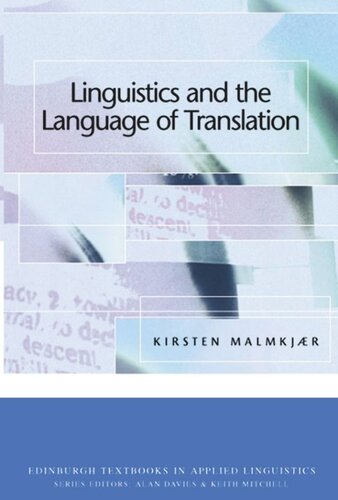

Most ebook files are in PDF format, so you can easily read them using various software such as Foxit Reader or directly on the Google Chrome browser.
Some ebook files are released by publishers in other formats such as .awz, .mobi, .epub, .fb2, etc. You may need to install specific software to read these formats on mobile/PC, such as Calibre.
Please read the tutorial at this link: https://ebookbell.com/faq
We offer FREE conversion to the popular formats you request; however, this may take some time. Therefore, right after payment, please email us, and we will try to provide the service as quickly as possible.
For some exceptional file formats or broken links (if any), please refrain from opening any disputes. Instead, email us first, and we will try to assist within a maximum of 6 hours.
EbookBell Team

5.0
48 reviewsGBS_insertPreviewButtonPopup('ISBN:9780748620562);
This book is for students of translation, languages and linguistics who would like to enhance their understanding of the relationships between these areas of study. The book uses explanation, discussion and practice to make explicit the forms of knowledge of language and of translation that makes translators successful. Chapters on the development of translation studies in the west and on contemporary approaches to translation provide the disciplinary context within which the processes and products of translating are studied. The theoretical and academic context for the chapters in which application is focal is provided by the book's flexible and forward-looking approach to meaning and translation. Meaning is seen as a temporary relationship between participants in language events and translation as a creative activity that contributes to such events. From this position, interaction between language study, linguistics and translation studies is seen as mutually enriching.
Five practical chapters cover sounds and rhythms, lexis, collocation and semantic prosody, texture, register, cohesion, coherence, implicature, speech and text acts, text and genre analysis, clausal thematicity and transitivity and the expression through language choices of ideological positions.
Key Features